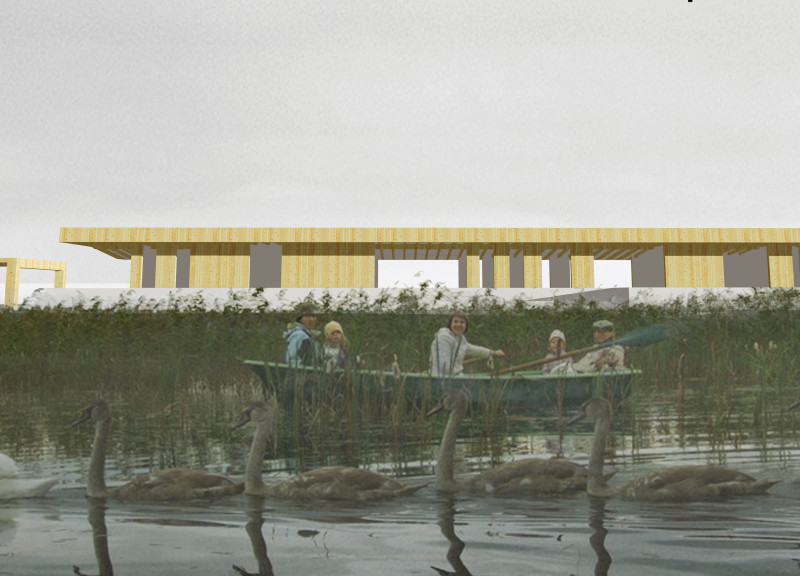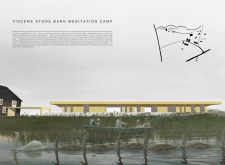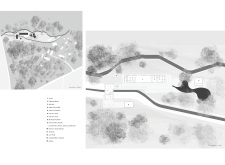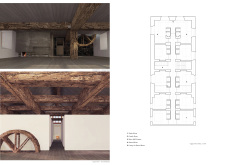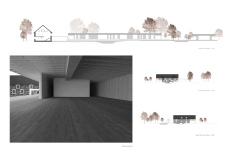5 key facts about this project
Functionally, the project serves as a multipurpose facility that accommodates various activities. It is designed to foster interaction, collaboration, and creativity among its users. The open-plan spaces are complemented by strategically placed private areas, ensuring a balance between communal engagement and individual reflection. This intentional layout underscores the project's commitment to adaptability, allowing it to evolve with the changing needs of its users over time.
One of the most notable aspects of the project is its materiality, which plays a critical role in both aesthetics and performance. The use of concrete provides a solid foundation, while extensive glass elements invigorate the design with natural light and visually connect the interior with the exterior landscape. Incorporating steel offers a robust structural framework, allowing for open spaces that encourage movement and interaction. The integration of wood adds warmth and texture, creating an inviting atmosphere that contrasts effectively with the more industrial materials. Additionally, traditional bricks are used to ground the design within its local context, paying homage to the architectural vernacular of the area.
The spatial organization further enhances the overall user experience. Key areas are thoughtfully delineated, with circulation paths guiding visitors through the space in an intuitive manner. This design facilitates fluid movement and flows between different functional zones. The incorporation of flexible spaces allows for a variety of setups and uses, from formal gatherings to informal meetings. The attention to detail in the arrangement of spaces reinforces the architectural ethos of the project.
Unique design approaches are evident throughout the project. For instance, the roofline is cleverly manipulated to create varying ceiling heights, contributing to a dynamic interior environment while also allowing for strategic opportunities for cross-ventilation and natural lighting. Moreover, the use of sustainable building practices is evident in the selection of locally sourced materials and energy-efficient systems. These decisions not only reduce the environmental impact of the construction but also enhance the building's resilience and longevity.
As the project integrates seamlessly into its geographical location, it fosters a sense of belonging and community engagement. The design acknowledges its surrounding context through visual and physical connections to the landscape, encouraging users to interact with their environment. By doing so, the architecture contributes positively to the local identity and promotes a dialogue between the built space and the natural world.
For those interested in exploring this project further, a deeper examination of the architectural plans, architectural sections, architectural designs, and architectural ideas will provide additional insights into the design philosophy and the thoughtful decisions that shaped this compelling architectural endeavor. Engaging with these elements will enhance understanding of how the project not only addresses functional requirements but also serves as a meaningful space for all who encounter it. Through careful design and consideration of users' needs, this architectural project stands as a testament to the principles of good design in modern architecture.


